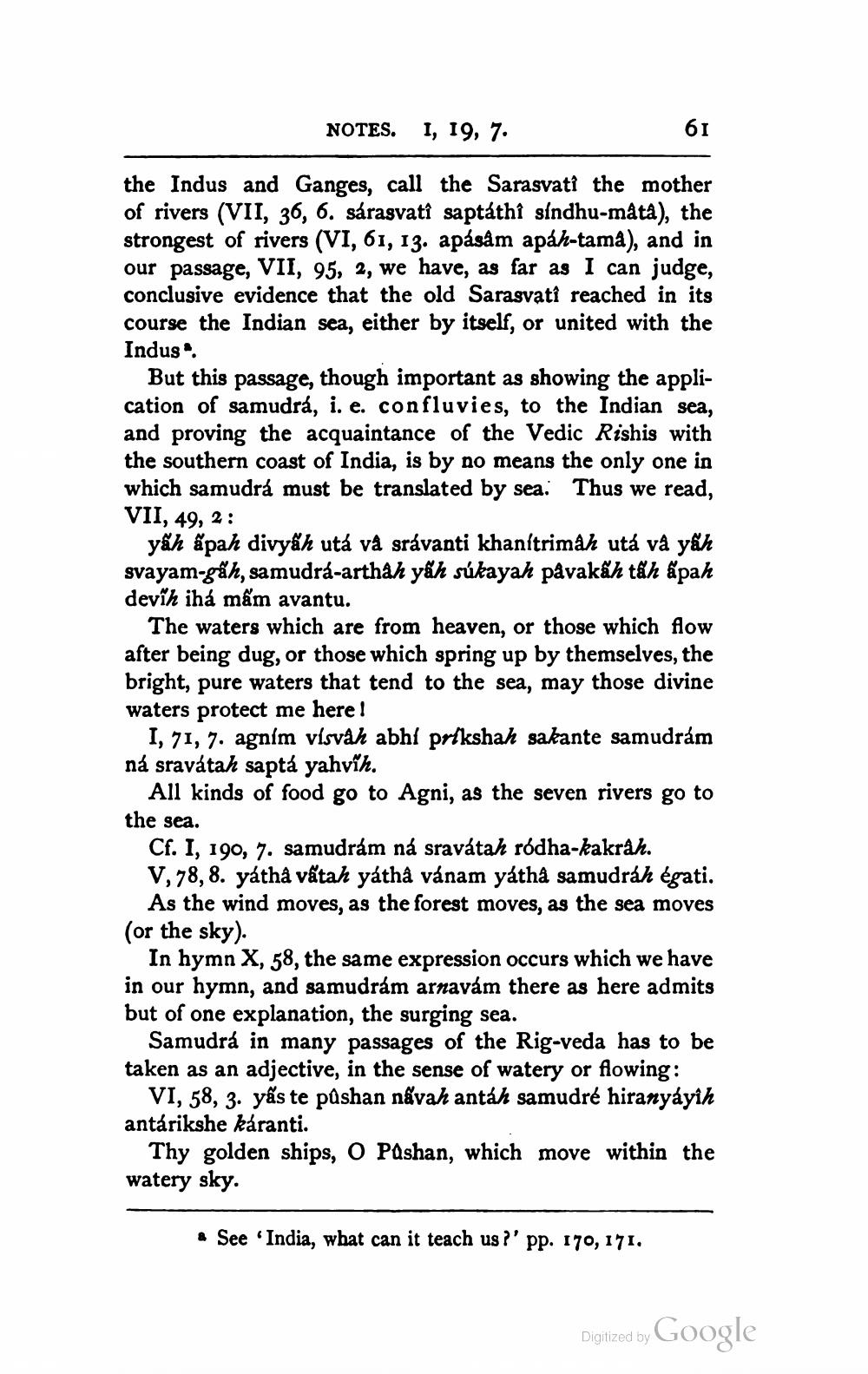________________
NOTES. I, 19, 7.
61
the Indus and Ganges, call the Sarasvati the mother of rivers (VII, 36, 6. sárasvatî saptathi sindhu-måtà), the strongest of rivers (VI, 61, 13. apásam apáh-tama), and in our passage, VII, 95, 2, we have, as far as I can judge, conclusive evidence that the old Sarasvatî reached in its course the Indian sea, either by itself, or united with the Indus
But this passage, though important as showing the application of samudra, i. e. confluvies, to the Indian sea, and proving the acquaintance of the Vedic Rishis with the southern coast of India, is by no means the only one in which samudrá must be translated by sea. Thus we read, VII, 49, 2:
yâh ápah divyäh utá và srávanti khanítrimah utá và yên svayam-gåh, samudra-arthah yah súkayah påvakah täh ápah devih ihá mám avantu.
The waters which are from heaven, or those which flow after being dug, or those which spring up by themselves, the bright, pure waters that tend to the sea, may those divine waters protect me here !
1, 71, 7. agním visvah abhi prikshah sakante samudrám ná sravátah sapta yahvih.
All kinds of food go to Agni, as the seven rivers go to the sea.
Cf. I, 190, 7. samudrám ná sravátah ródha-kakrah. V, 78, 8. yáthà vấtah yáthà vánam yáthå samudráh égati.
As the wind moves, as the forest moves, as the sea moves (or the sky).
In hymn X, 58, the same expression occurs which we have in our hymn, and samudrám arnavám there as here admits but of one explanation, the surging sea.
Samudra in many passages of the Rig-veda has to be taken as an adjective, in the sense of watery or flowing:
VI, 58, 3. yas te pashan nävah antah samudré hiranyáyih antárikshe káranti.
Thy golden ships, O Pashan, which move within the watery sky.
. See 'India, what can it teach us ?' pp. 170, 171.
Digized by Google




